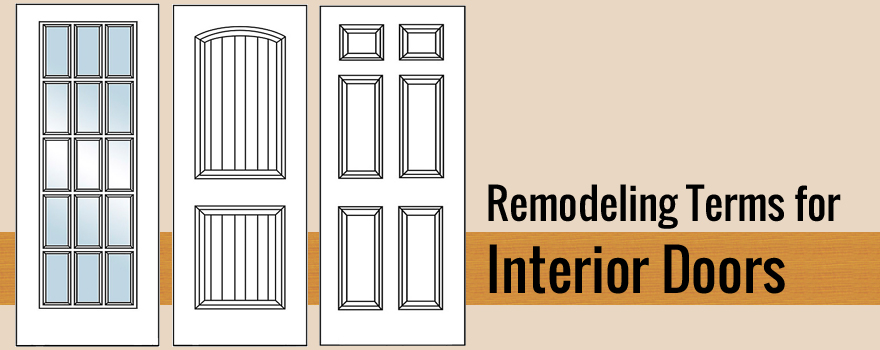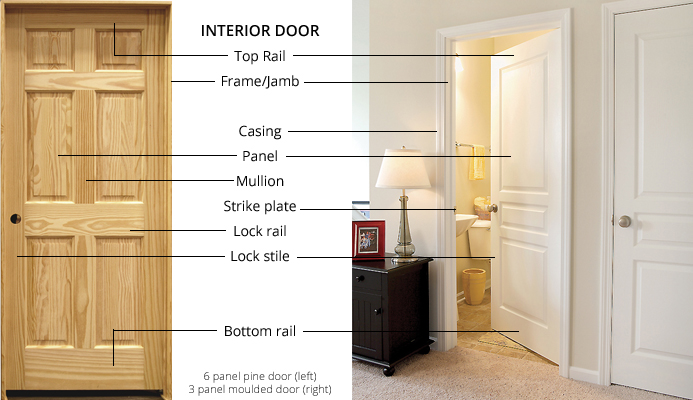Interior
Interior Door Home Remodeling Terms

In our homes, interior doors allow us privacy in the bedroom and bathroom, keep closet and storage items out of view, and protect toddlers or pets from harm by separating a basement from a first floor. Doors are essential to every home and consist of a variety of parts. Below you’ll find a list of interior door home remodeling terms.
Interior Door Home Remodeling Terms
- Frame/Jamb – Exactly what it sounds like. It’s the frame surrounding a door and attaches to the door by hinges. Prehung doors have the frame already attached.
- Slab – Quite simply, a door with no frills. No hinges, no frame; nothing but the door.
- Hinges – Attaches the door to the door jamb. Two to three hinges are commonly used.
- Top rail/lock rail/bottom rail – The top, center and bottom horizontal portions of a door.
- Mullion – The vertical center of the door; usually between two panels.
- Stiles – Vertical boards; a lock stile is where the doorknob is placed.
- Astragal – A molding profile (usually half round) separating a pair of doors.
- Sill – The bottom of door frame. A threshold is a slightly curved piece sitting atop the sill.
- Door sweep – Installed at the bottom of a door to seal and block drafts from unheated rooms.
- Swing – Also known as handing. This determines the direction a door opens and where door knob hardware is placed.
- Stop – A thin strip inside a door frame which stops the door from swinging in too far.
- Strike plate – A metal plate with a hole for the bolt of a door; attached to the jamb. A face plate is on the lockset and attaches to the door.

Popular Styles
- Panel – Rectangular panels within the door; 4 or 6 panel doors are most common.
- Flush – A flat door with no embellishment.
- Louver – A door with horizontal slats.
- French door – Includes 10 – 15 glass panels within a wooden frame
- Barn door – A rustic style sliding door, usually mounted to a wall with a hardware kit.
- Bifold – A main door consisting of 2 – 4 (or more) panels which slide open and fold.
- Sliding or pocket – Sliding doors move side to side. Pocket doors hide within walls when fully open.
- Hollow core – Lighter weight, but more noise will pass through. For interior use only.
- Solid core – Sturdier, but heavier and quieter.

Interior door styles (l-r): Panel, flush (lauan), louver, 10-lite double (French), barn and bifold.
About Interior Doors
Molded, wood, and glass are the most popular passage doors. Standard hinged door styles can include panel, flush, louver, decorative glass, and French doors. In addition, other styles such as bifold, sliding and pocket doors, work on a track and move side to side.
- Size – 3/0 x 6/8 is a standard measure for 36” x 80” single door. Widths of 30” and 32” are also common and other sizes are available.
- Rough opening – The size of the wall opening for a new door before installation.
- Casing – Decorative moulding surrounding a door to complete the installation.
Interior door home remodeling terms is the second post in a series about products used in remodeling and home improvement. In addition, the information can be helpful when purchasing materials for your renovation.
